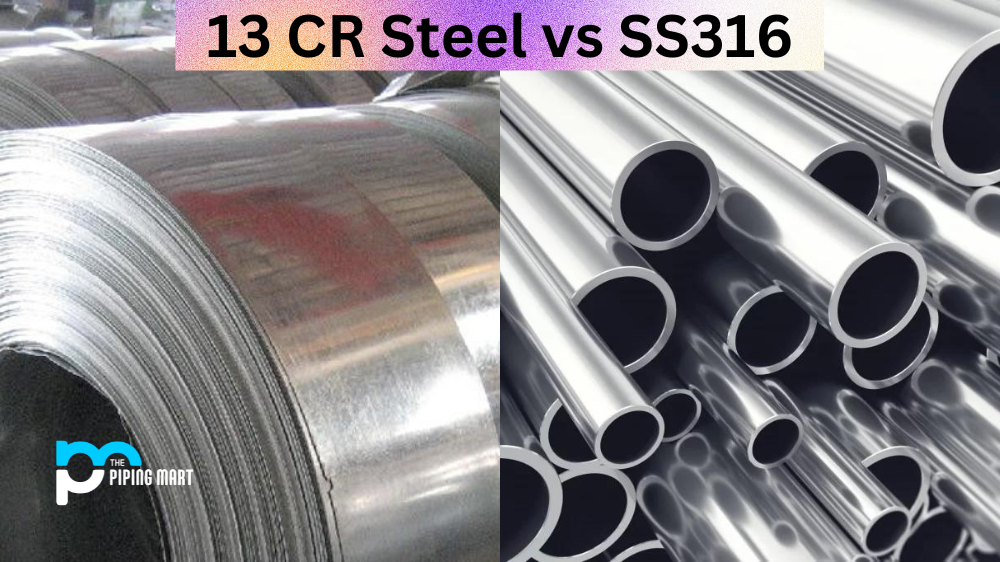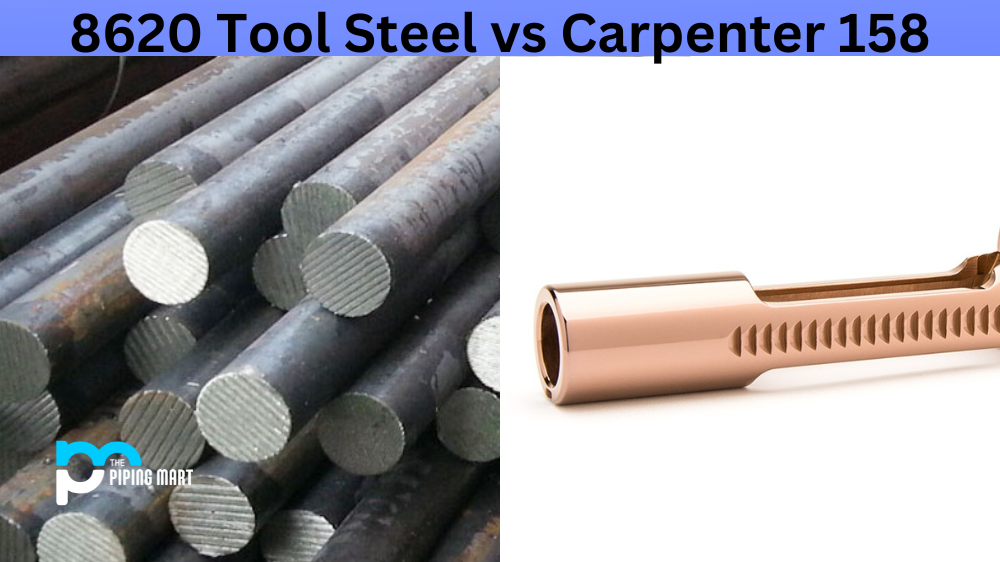Choosing the right material for a specific application ensures long-lasting and reliable performance, especially in harsh environments such as offshore and marine industries. Two popular materials used for such applications are 13 CR steel and SS316. Both materials have unique properties and characteristics, making them suitable for different applications. In this blog post, we’ll compare 13 CR steel and SS316, highlighting their properties, advantages, and disadvantages to help you make an informed decision.
Difference Between 13CR Steel and SS316
Chemical Composition and Corrosion Resistance
Chemical composition is one of the most critical factors determining a material’s properties and performance. 13 CR steel contains 13% chromium, which enhances its corrosion resistance and makes it suitable for use in aggressive and corrosive environments. It also has a higher carbon content, which improves its strength and hardness. On the other hand, SS316 contains 16-18% chromium, 10-14% nickel, and 2-3% molybdenum, which provide higher corrosion resistance, especially in chloride environments. SS316 offers better corrosion resistance than 13 CR steel in most environments.
Strength and Toughness
Strength and toughness are essential properties that make a material suitable for withstanding high loads and impacts. 13 CR steel offers higher strength and hardness than SS316, making it ideal for applications that require high wear resistance and durability. However, it has lower toughness and flexibility, which can be a disadvantage in applications that involve impacts or sudden loads. SS316, on the other hand, offers higher toughness and flexibility, making it more suitable for applications that require higher impact resistance or deformation.
Machinability and Weldability
Machinability and weldability are essential factors determining how easy it is to work with a material. 13 CR steel has good machinability and weldability, making it easier to manufacture and fabricate into various shapes and forms. However, it requires proper heat treatment to avoid cracking or distortion during welding. In contrast, SS316 has poor machinability but excellent weldability, making it suitable for applications that require complex shapes or structures.
Cost and Availability
Cost and availability are crucial considerations that affect the choice of material for different applications. 13 CR steel is relatively cheaper and more widely available than SS316, making it an attractive option for cost-effective applications. However, SS316 provides better corrosion resistance and overall performance, making it more suitable for applications that require reliability and durability.
Applications
13 CR steel and SS316 have different properties and characteristics that make them suitable for various applications. 13 CR steel is commonly used in oil and gas drilling, mining, and offshore applications requiring high strength, wear, and corrosion resistance. SS316, on the other hand, is widely used in marine and chemical processing applications that require excellent corrosion resistance and high durability.
Conclusion
Choosing between 13 CR steel and SS316 depends on several factors, including the specific application, environmental conditions, and budget. Both materials have unique advantages and disadvantages, making them suitable for different applications. SS316 provides better corrosion resistance and durability, while 13 CR steel offers higher strength and wear resistance. Choosing the right material requires careful consideration of these factors to ensure reliable and long-lasting performance.
Meet Heer, a dynamic and driven writer learning tricks of her trade in the metal industry. With a background in Digital Marketing, Heer brings a unique perspective to her writing, sharing valuable insights. Apart from blogging she like reading and hiking.




